Young Avengers for Newcomers: Simplified Marvel Guide
Category: Marvel
Discover the Young Avengers: Your Easy Marvel Starting Point
If you're a casual Marvel fan or completely new to the Marvel Universe, the Young Avengers might seem like a complex, sprawling saga filled with countless heroes and tangled backstories. Maybe you stumbled here trying to make sense of who these younger heroes are and why they matter in a world dominated by legends like Iron Man and Captain America. You want a straightforward guide that breaks down the characters and stories without getting lost in long comic book history or continuity headaches.
This post is made just for you — the curious newcomer who wants a clear, standalone introduction to the Young Avengers. We’ll cut through the noise and present each hero, their origins, their powers, and their role in key storylines in easy-to-digest sections. No prior comic knowledge needed! We'll explain why the team was formed, their core members, their key adversaries, and how they fit into the larger Marvel tapestry.
Unlike other guides cluttered with jargon and detailed comic arcs, this post gives you just what you need to know to understand and appreciate the Young Avengers. So if you've heard of Wiccan or Kate Bishop but never quite knew where to start, keep reading — you're about to get the perfect beginner-friendly introduction.
- Discover the Young Avengers: Your Easy Marvel Starting Point
- What Are the Young Avengers?
- Origins of the Young Avengers: How and Why the Team Formed
- Meet the Core Members of the Young Avengers
- Powers and Personalities – A Quick Breakdown of Each Member’s Abilities and What Makes Them Unique
- Key Storylines to Know
- Villains and Challenges – Notable Adversaries and Obstacles the Young Avengers Face
- Young Avengers vs. The Avengers – Understanding Their Relationship and Key Differences
- Representation and Themes – Diversity and Modern Issues in Young Avengers
- Appearances Beyond Comics – Where Newcomers Might Have Seen Young Avengers
- Why You Should Care – What Makes the Young Avengers a Great Entry Point into Marvel Stories
What Are the Young Avengers?
The Young Avengers are a unique superhero team in the Marvel Universe, made up of teenage heroes who step up to fill the shoes of well-known Avengers like Captain America, Iron Man, and Thor. Created to resonate with a younger generation, the team blends fresh new faces with legacy characters tied to the Avengers' history. Their stories explore themes of identity, friendship, and heroism from the perspective of youth, making them relatable and accessible to newcomers and casual readers alike.
Unlike the classic Avengers, which often focus on seasoned heroes handling world-threatening crises, the Young Avengers tackle challenges that reflect their age and experiences—balancing school, relationships, and self-discovery alongside their heroic duties. This team is not just a sidekick group; they have carved out a meaningful place in Marvel’s vast universe by dealing with timely issues such as diversity, legacy, and the impact of power on young people. Understanding the Young Avengers is key to appreciating how Marvel expands its storytelling to include the next generation of heroes ready to shape the future.

Image courtesy of Vanessa Loring
Origins of the Young Avengers: How and Why the Team Formed
The Young Avengers first appeared in 2005, created by writer Allan Heinberg and artist Jim Cheung, as a fresh take on the superhero team concept aimed at younger readers and new fans. The team formed in response to a world where many original Avengers were either missing, retired, or presumed dead after significant Marvel events. This vacuum created a chance for a new generation of heroes to rise, inspired by the legacy of the iconic Avengers but grappling with their own identities and challenges.
Why the Young Avengers Came Together
The initial storyline introduces the Young Avengers as a group of teenagers who come together out of necessity and shared purpose, rather than by being officially sanctioned like the classic Avengers. Their formation is sparked by a mix of personal quests and a collective need to protect their world when the original heroes are unavailable. Some members, such as Wiccan and Hulkling, discover that their powers and backgrounds connect deeply to Avengers’ history, while others, like Kate Bishop, step up independently, inspired by a desire to prove themselves.
The First Storyline: “Young Avengers” (2005)
The debut comic arc focuses on the young heroes discovering each other and learning to work as a team. They face threats linked to old Avengers villains and uncover hidden secrets about their own origins. Key themes include:
- Legacy and Identity – Many members wrestle with living up to the reputations of the Avengers they admire.
- Discovery of Powers – The series highlights the excitement and struggles of mastering new abilities.
- Building Trust – These teenagers must learn to trust each other despite their different backgrounds and personalities.
This origin story sets the tone for the Young Avengers as both connected to Marvel’s rich legacy and standing on their own as a vital new force. For newcomers, it’s the perfect jumping-on point, providing a clear, character-driven introduction without overwhelming past continuity. Understanding how and why the team formed helps casual fans appreciate the unique role Young Avengers play in Marvel’s ever-expanding universe.
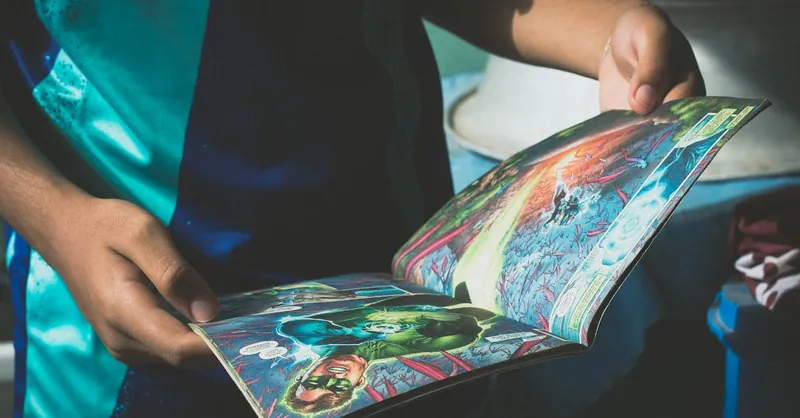
Image courtesy of Dayvison Tadeu
Meet the Core Members of the Young Avengers
To truly understand the Young Avengers, it helps to get to know the core heroes who make up this dynamic team. Each member brings their unique background, powers, and personality, forming a group that’s relatable and inspiring for both new and casual Marvel fans. Here’s a simple breakdown of some of the most important Young Avengers you’ll encounter:
1. Wiccan (Billy Kaplan)
- Role: The magical powerhouse of the team.
- Powers: Reality-warping magic similar to his father, the Scarlet Witch. He can cast spells, teleport, and manipulate energy.
- Background: Billy struggles with controlling his vast magical abilities and understanding his destiny, making him a deeply personal and emotional character. His journey grapples with identity and acceptance, including his LGBTQ+ representation as one of Marvel’s prominent gay heroes.
- Why He Matters: Wiccan symbolizes the next generation’s magical legacy, carrying the weight of past Avengers while forging his own path.
2. Hulkling (Teddy Altman)
- Role: The super-strong shapeshifter and heart of the team.
- Powers: Enhanced strength, durability, and alien shapeshifting abilities due to his secret Kree-Skrull hybrid heritage.
- Background: Teddy is a prince in an alien empire, but he yearns for a normal life on Earth. His story explores themes of identity, belonging, and the responsibility of leadership.
- Why He Matters: Hulkling’s blend of cosmic heritage and teenage heart makes him a bridge between earthly struggles and larger cosmic stakes in the Marvel Universe.
3. Kate Bishop (Hawkeye)
- Role: The expert archer and highly skilled combatant.
- Powers: No superpowers, but an expert marksman with a bow and exceptional hand-to-hand fighting skills.
- Background: Inspired by the original Hawkeye (Clint Barton), Kate takes on his mantle to prove she’s a hero in her own right. She is fiercely independent, confident, and a natural leader.
- Why She Matters: Kate represents the heroism that comes from determination and skill rather than superpowers, making her relatable and grounded.
4. Patriot (Eli Bradley)
- Role: The patriotic leader and strategist.
- Powers: Enhanced strength and agility through a super-soldier serum.
- Background: Eli is the grandson of Isaiah Bradley, a Black super-soldier who fought in World War II under secret and difficult circumstances. Patriot embodies legacy and the ongoing struggle for recognition and justice.
- Why He Matters: His story connects the Young Avengers to Marvel’s historical context, adding depth to the team’s purpose.
5. Stature (Cassie Lang)
- Role: The size-changing powerhouse.
- Powers: Ability to grow and shrink in size, similar to her father, Ant-Man (Scott Lang).
- Background: Cassie wants to be a hero like her dad and struggles with balancing her teenage life and heroic duties.
- Why She Matters: She highlights themes of family legacy and youthful determination within the team.
These heroes form the heart of the Young Avengers, each contributing to the team’s unique identity. Whether through magic, strength, skill, or legacy, they embody the spirit of young heroes rising to the challenge—perfect for newcomers wanting straightforward, compelling introductions to Marvel’s next-generation Avengers.
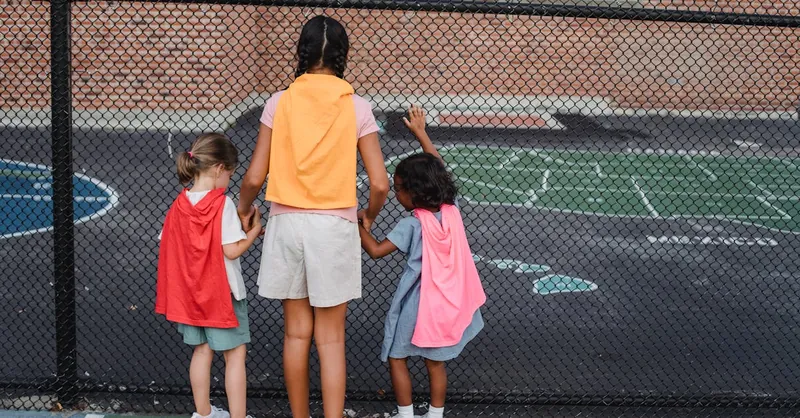
Image courtesy of Antonius Ferret
Powers and Personalities – A Quick Breakdown of Each Member’s Abilities and What Makes Them Unique
One of the best ways to get to know the Young Avengers is by understanding their distinct powers and personalities. Each member brings something special to the team, making them not just powerful heroes but also relatable characters with unique strengths and challenges. Whether they wield magic, master archery, or carry the weight of legacy, their abilities reflect their individuality and growth.
Key Powers and Personal Traits of the Young Avengers
- Wiccan (Billy Kaplan)
- Abilities: Reality-altering magic, spellcasting, energy manipulation, teleportation.
-
Personality: Thoughtful and introspective, Billy balances the burden of immense magical power with a quest for self-discovery and acceptance.
-
Hulkling (Teddy Altman)
- Abilities: Superhuman strength, durability, shapeshifting thanks to his alien heritage.
-
Personality: Loyal and compassionate, Teddy combines a cosmic legacy with a desire for normalcy and belonging.
-
Kate Bishop (Hawkeye)
- Abilities: Skilled archer, expert martial artist, exceptional tactical mind—no superpowers but top-level human skill.
-
Personality: Confident, determined, and independent, Kate proves that courage and talent can rival superhuman powers.
-
Patriot (Eli Bradley)
- Abilities: Enhanced physical abilities through a super-soldier serum (strength, agility).
-
Personality: Proud and strategic, Eli navigates legacy and patriotism while leading the team with heart and honor.
-
Stature (Cassie Lang)
- Abilities: Size manipulation—can grow to enormous heights or shrink small like her father, Ant-Man.
- Personality: Brave and sometimes impulsive, Cassie juggles typical teenage struggles alongside her heroic responsibilities.
What Makes the Young Avengers Stand Out?
- Diversity of Powers: Unlike some teams that rely solely on one type of ability, the Young Avengers blend magic, super-soldier enhancements, alien biology, expert marksmanship, and size-alteration, giving them versatility in combat and storytelling.
- Relatable Personalities: Their struggles—whether to control powers, live up to legacies, or find their place—mirror real-life themes of identity, growth, and friendship, making them ideal entry points for casual fans and newcomers.
- Legacy and Innovation: Many members are connected to Marvel’s iconic heroes through blood ties or mentorship but bring fresh perspectives that reflect modern values and inclusivity.
Understanding these powers and personalities gives you a clearer picture of why the Young Avengers matter—not just as a team of superheroes, but as compelling characters who represent the future of Marvel storytelling. Whether you’re drawn to magic, skill, or heart, there’s a Young Avenger you can root for from the very beginning.

Image courtesy of Monstera Production
Key Storylines to Know
To really appreciate the Young Avengers and their place in Marvel’s universe, it helps to understand a few of their major story arcs. These key storylines showcase the team’s growth, challenges, and how they connect to the larger Marvel world—all explained simply for newcomers without overwhelming comic book jargon.
1. Young Avengers (2005) – The Beginning
The original 2005 series by Allan Heinberg is the essential starting point. It introduces the team as they discover their powers and origins while dealing with threats tied to the legacy of the original Avengers. This storyline explores themes of identity, friendship, and legacy, making it a perfect entry for new readers. You’ll see how the young heroes come together, learn to trust each other, and face their first big challenges as a team.
2. Young Avengers: Children’s Crusade (2010-2012)
This critically acclaimed arc is a direct follow-up that deepens Wiccan and Hulkling’s roles and puts the team in the spotlight regarding the fate of the Scarlet Witch. It focuses on powerful magic, consequences of past Avengers’ actions, and the search for family and belonging. It’s an emotional, character-driven story that highlights the Young Avengers as important players in the Marvel Universe, perfect for fans wanting more depth beyond the origin.
3. Avengers: Children's Crusade - Aftermath
Following the Children’s Crusade, this mini-series further explores how the Young Avengers adjust to new realities, moral dilemmas, and their growing responsibilities. It’s a great way to see how the team evolves from teenagers figuring things out into true heroes with tough decisions to make.
4. Young Avengers Vol. 2 & 3 (2013, 2019)
Later runs introduce fresh members and new threats while maintaining the core themes of legacy and growth. These volumes keep the team relevant by addressing modern Marvel Universe events and expanding the roster’s diversity, making it accessible for new readers who want ongoing stories that reflect today’s world.
Why These Storylines Matter for Newcomers
- Clear Entry Points: Each major arc provides standalone stories that are engaging without requiring deep knowledge of Marvel’s past.
- Character Focus: The stories are driven by relatable characters dealing with universal themes like identity, friendship, and family.
- Legacy & Growth: You see the evolution of the team from novices to heroes with meaningful impact on Marvel’s bigger narrative.
Starting with these key arcs offers new and casual fans an easy path to understanding what makes the Young Avengers unique, important, and exciting within the vast Marvel Universe.
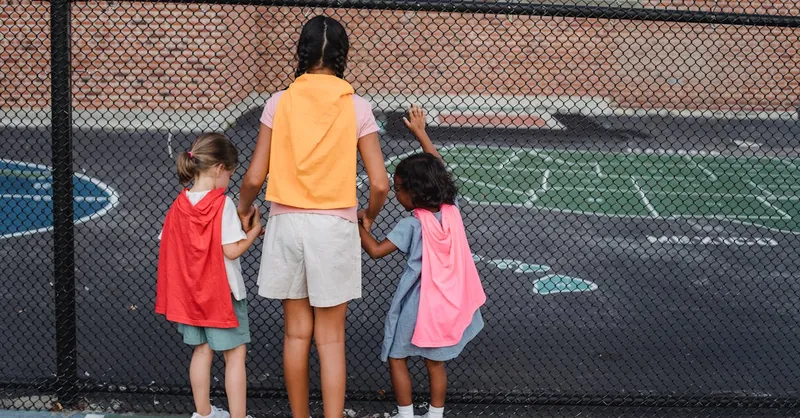
Image courtesy of Antonius Ferret
Villains and Challenges – Notable Adversaries and Obstacles the Young Avengers Face
Every superhero team needs worthy villains and gripping challenges to push their limits—and the Young Avengers are no exception. Facing threats ranging from cosmic forces to personal demons, the team battles a diverse array of adversaries that test their powers, teamwork, and resolve. Understanding these villains and challenges helps newcomers grasp the high stakes and emotional depth behind the Young Avengers’ heroic journey.
Key Villains and Antagonists
- Kang the Conqueror
- A time-traveling warlord with advanced technology and knowledge of history, Kang is one of Marvel’s most dangerous foes.
-
His manipulations and attempts to control time have directly threatened the Young Avengers, forcing them to confront complex, universe-altering dilemmas.
-
Children of Tomorrow
- This powerful group of futuristic villains created by Kang consists of enhanced soldiers and synthetic beings.
-
They serve as physical obstacles and raise the stakes with their relentless pursuit to shape the future—often clashing with the Young Avengers’ mission to protect the present.
-
The Scarlet Witch’s Legacy and Mystical Forces
- Magical threats related to Wiccan’s heritage often place the team in danger, including dark sorcery, reality-warping foes, and consequences arising from past Avengers’ actions.
-
These challenges emphasize the mystical side of their adventures, blending personal growth with epic battles.
-
Personal and Emotional Challenges
- Beyond physical villains, the Young Avengers face struggles such as identity crises, the pressure of legacy, and interpersonal conflicts within the team.
- These internal obstacles create depth and realism, showing that sometimes the hardest battles are fought within.
Why These Challenges Matter for Newcomers
- Diverse Threats: From cosmic conquerors to magical dilemmas, the variety of villains makes the Young Avengers’ stories exciting and unpredictable.
- Growth Through Adversity: Each battle, whether against external foes or inner fears, helps the team mature and solidify their bonds.
- Connection to Marvel’s Bigger Picture: Facing iconic villains like Kang ties the Young Avengers to larger Marvel storylines while maintaining their unique identity.
By facing these compelling villains and overcoming personal obstacles, the Young Avengers prove they’re ready to carry the mantle of heroes—and provide newcomers with thrilling, relatable stories that blend action with heartfelt character moments.
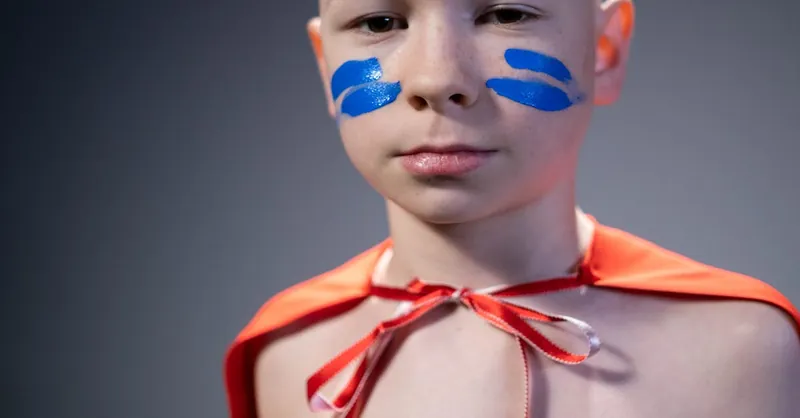
Image courtesy of cottonbro studio
Young Avengers vs. The Avengers – Understanding Their Relationship and Key Differences
While the Young Avengers are inspired by the legendary Avengers, it’s important to recognize how these two teams differ and relate within the Marvel Universe. The original Avengers—icons like Iron Man, Thor, and Captain America—are established heroes with decades of experience facing global threats. In contrast, the Young Avengers are a fresh, youthful team stepping into the spotlight during a transitional period when many classic Avengers were missing or inactive.
How the Young Avengers Connect to the Original Avengers
-
Legacy and Inspiration: Many Young Avengers members have direct ties to the classic heroes as proteges, relatives, or spiritual successors. For example, Kate Bishop takes up the mantle of Hawkeye, inspired by Clint Barton, while Patriot carries on the legacy of Captain America through his grandfather’s heroic past. This connection grounds the Young Avengers firmly within the larger Avengers mythos.
-
Mentorship and Support: Over time, relationships develop between the teams, with original Avengers occasionally mentoring or supporting the younger heroes. However, the Young Avengers are mostly self-driven, learning what it means to be heroes on their own terms.
-
Shared Universe, Different Roles: Both teams coexist in the same Marvel Universe but often face different kinds of challenges reflective of their experience and age. The original Avengers commonly prevent world-ending crises, while the Young Avengers frequently deal with threats tied to personal growth, identity, and emerging global dangers.
Key Differences Between the Teams
- Experience Level: The Avengers are seasoned veterans, while the Young Avengers are still learning to harness their powers and define their teamwork.
- Purpose and Themes: The Avengers focus on saving the world from large-scale threats. The Young Avengers’ stories are more about coming of age, exploring identity, responsibility, and legacy.
- Team Dynamics: The Young Avengers often face internal conflicts and struggles balancing normal teenage life with heroics, adding emotional depth that is distinct from the usually mission-driven original team.
- Diversity and Representation: The Young Avengers emphasize inclusivity and contemporary social themes, featuring LGBTQ+ characters, diverse backgrounds, and fresh perspectives reflective of today’s audience.
Understanding these points helps newcomers appreciate how the Young Avengers don’t just fill the gaps left by missing legends—they expand the Marvel Universe by offering new narratives that resonate with younger readers and modern fans. They complement the Avengers’ grand legacy while carving out their own relevant and compelling place in superhero history.

Image courtesy of cottonbro studio
Representation and Themes – Diversity and Modern Issues in Young Avengers
One of the standout aspects of the Young Avengers series is its commitment to diversity and exploring contemporary themes that resonate with today’s readers—especially newcomers looking for inclusive and relevant superhero stories. Unlike some traditional superhero teams that often focus solely on action and legacy, the Young Avengers bring fresh perspectives by representing a broad spectrum of identities, backgrounds, and experiences. This inclusive approach deepens the storytelling and highlights important social issues through the lens of superhero adventures.
Diversity at the Core
- LGBTQ+ Representation: Characters like Wiccan and Hulkling not only serve as powerful heroes but are also one of Marvel’s most prominent LGBTQ+ couples. Their relationship is portrayed with sensitivity and authenticity, reflecting modern values of acceptance and visibility. This was a groundbreaking move when the Young Avengers debuted and continues to make the team vital for readers seeking representation in comics.
- Ethnic and Cultural Diversity: Characters such as Patriot highlight racial history and struggles, as he honors his grandfather Isaiah Bradley—Marvel’s Black super-soldier—bringing attention to real-world themes of racial injustice and heritage. This adds layers of emotional weight and social relevance to the superhero narrative.
- Gender Equality and Strong Female Leads: With heroes like Kate Bishop (Hawkeye) and Stature (Cassie Lang), the Young Avengers emphasize female empowerment through skilled, complex characters who challenge traditional gender roles. Kate’s confidence and independence make her a standout role model for all readers.
Modern Themes Explored
The Young Avengers comics skillfully weave in themes that go beyond typical superhero conflicts, making their stories more relatable and meaningful:
- Identity and Self-Discovery: Many characters wrestle with who they are—whether it’s accepting their powers, coming to terms with their family legacy, or understanding their place in the world. This reflects real-life struggles of adolescence and young adulthood.
- Friendship and Found Family: The team’s bonds evolve into a chosen family, an important theme for readers who value connection beyond biological ties. This theme supports inclusivity and emotional support networks.
- Responsibility and Growth: The series charts the growth from adolescence into heroism, exploring how young people navigate the pressures of expectations, power, and morality in a complicated world.
- Social Justice and Legacy: Through stories involving Patriot and others, the comics acknowledge historical injustices and modern social issues, inviting readers to reflect on the meaning of heroism in a real-world context.
The combination of diverse characters and progressive themes makes the Young Avengers one of Marvel’s most accessible and compelling teams for new readers who want superheroes reflecting today’s social landscape. For casual fans and newcomers, this means diving into stories that not only entertain but also encourage empathy and understanding—key reasons why the Young Avengers resonate deeply in modern pop culture.
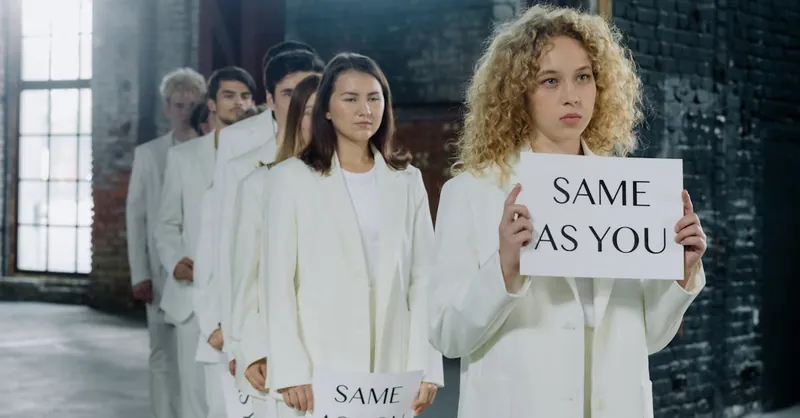
Image courtesy of cottonbro studio
Appearances Beyond Comics – Where Newcomers Might Have Seen Young Avengers
If you're wondering where to spot the Young Avengers outside of the comic book pages, you're in luck—this dynamic team has begun making waves across various Marvel media, making them more accessible to new and casual fans alike. While they may not yet be as omnipresent as classic Avengers, the Young Avengers have started appearing in popular TV shows, movies, and video games, helping to introduce their characters and stories to wider audiences.
Television and Streaming Shows
-
Marvel’s Disney+ Series: Kate Bishop, arguably the most prominent Young Avenger, stars in the hit series Hawkeye (2021). This show sets the foundation for the Young Avengers by showcasing her skills, personality, and heroism—providing a perfect jumping-off point for newcomers who want to see a young, relatable hero in action. Her appearance hints at a larger Young Avengers team forming in the Marvel Cinematic Universe (MCU), making her portrayal an important gateway for fans.
-
Animated Series: Various Marvel animated shows have featured or referenced Young Avengers characters, such as Wiccan and Hulkling, especially in ensemble superhero programs tailored for younger viewers and families. These adaptations simplify backstories and make the heroes’ powers and dynamics more approachable for casual watching.
Marvel Cinematic Universe (MCU) Hints and Future Potential
While the Young Avengers haven’t yet starred as a full team in MCU movies, they are increasingly being set up through individual character introductions. The MCU is known for planting seeds that lead to exciting new team-ups and story arcs. Expect to see more Young Avengers forming as the Universe expands, especially through characters introduced in series like Hawkeye and upcoming Disney+ shows.
Video Games
-
Marvel’s Avengers Game: Several Young Avengers characters, including Kate Bishop and Wiccan, appear as playable heroes in Marvel’s Avengers (2020) and its expansions. The game provides an immersive way to experience their abilities and personalities firsthand, perfect for casual fans who enjoy interactive storytelling.
-
Mobile and Console Games: The Young Avengers also show up in various Marvel-themed mobile games and other superhero titles, where players can unlock and play as these heroes. These appearances help familiarize players with the team’s members and powers in a fun, hands-on way.
Why These Appearances Matter for Newcomers
- Familiar Faces: Spotting Young Avengers in popular shows and games helps casual viewers recognize their names and powers before diving into comics.
- Accessible Storytelling: Screen adaptations and games often present simplified, self-contained stories that provide a quick understanding of who these heroes are.
- Growing Popularity: As more Young Avengers appear across Marvel media, their presence reinforces why they matter in the larger superhero landscape and encourages fans to explore their comics.
Whether through Kate Bishop’s breakout role or Wiccan’s magical prowess in a game, the Young Avengers are steadily becoming a part of Marvel’s mainstream pop culture. Newcomers should keep an eye on upcoming MCU projects and media expansions, as the Young Avengers are poised to become one of the defining next-generation teams in Marvel’s ever-evolving universe.
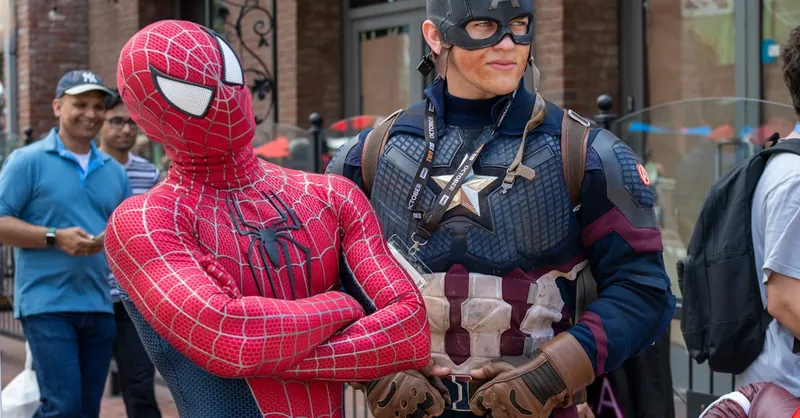
Image courtesy of Thom Gonzalez
Why You Should Care – What Makes the Young Avengers a Great Entry Point into Marvel Stories
If you're new to Marvel or a casual fan wondering where to start, the Young Avengers offer one of the best gateways into the sprawling Marvel Universe. Unlike some older superhero teams bogged down by decades of complex continuity, the Young Avengers represent a fresh, accessible point of entry with stories rooted in relatable themes and diverse characters. Here’s why they deserve your attention:
1. Relatable Characters and Themes
The Young Avengers are teenagers and young adults dealing with real-world issues alongside their superhero duties. From identity struggles and friendship dynamics to grappling with legacy and responsibility, their stories capture universal experiences that make it easy for newcomers to connect emotionally. Whether it’s Wiccan’s magical self-discovery or Kate Bishop’s drive to prove herself, these characters feel grounded and genuine, removing the intimidating barrier often associated with superhero comics.
2. Diversity and Inclusivity
Marvel’s commitment to representing a broad spectrum of backgrounds shines through in the Young Avengers. Featuring LGBTQ+ heroes, characters from different ethnicities, and strong female leads, the team reflects modern society and promotes inclusion. This resonance with contemporary social themes makes reading their stories both relevant and refreshing, appealing to a wide audience who seek representation in media.
3. Standalone but Connected Stories
While the Young Avengers are tied to Marvel’s larger universe, their stories are designed to be understandable on their own. Key arcs highlight their formation, growth, and challenges without requiring prior knowledge of decades-old comics. This balance offers newcomers a chance to enjoy epic superhero action along with meaningful character development—perfect for casual fans who want to dive into Marvel without feeling lost.
4. A Bridge to the Larger Marvel Universe
Following the Young Avengers offers a natural path to broader Marvel stories. Their adventures often intersect with major Marvel events and iconic characters, giving casual readers a glimpse into the wider universe at a manageable pace. Plus, with the increasing presence of Young Avengers members in Marvel media such as the MCU and video games, getting familiar with the team now sets you up for an even richer experience as their popularity grows.
In short, the Young Avengers provide a smart, engaging, and inclusive gateway that makes Marvel’s complex world more digestible and inviting for new and casual fans alike. Their combination of youthful energy, meaningful storytelling, and cultural relevance creates a compelling reason to give them a chance—and discover the next generation of heroes shaping Marvel’s future.
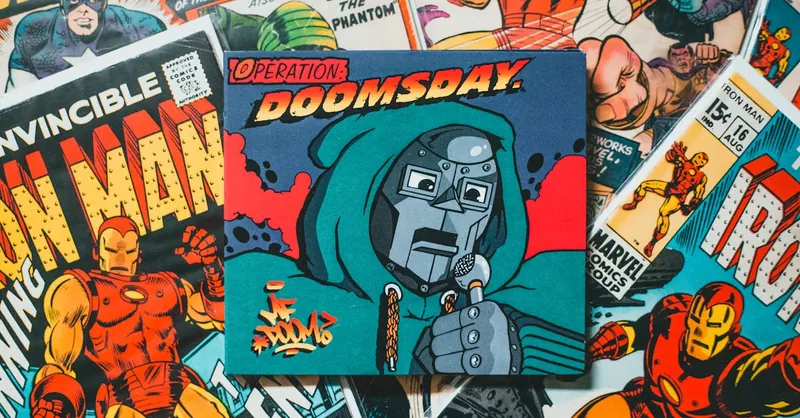
Image courtesy of Erik Mclean
